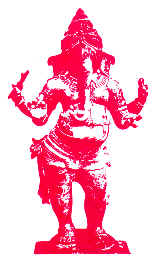|
|
What makes a dance Classical?
An art from this stature evolves over a long period of time. Its technique is stylized, crystallized, codified, and its projection conforms to a particular and predetermined pattern of conscious artistry.
Emotion, a necessary concomitant of every expressional art, is intrinsic to classical dance too, but far from being instinctive or impulsive, it is engendered through the performer's express volition and is ruled by the intellect.
Essential Rapport:
Unlike folk dance, classical dance is performed not so much for the participant's own satisfaction as for that of another, consequently classical dance presupposes the existence of not only the performer, but also the beholder; and it is only when rapport is established between the two that the implicit function of the dance can be said to have been fulfilled.
Again, while in folk dance the performer may imbibe the technique merely through exposure to the form concerned, in classical dance this can, by and large, he achieved only through instruction.
And, finally, it can also be said that classical dance is the dance that has stood the best of time; it is dance that stems from the inspiration and work of the individual rather than of the collective; it is dance that not only affords appeal to the senses, but also stimulates the intelligence of performer and spectator alike.
Ancient Sources:
One fundamental attribute of classical Indian dance forms, is that practically all of them spring from the religious usages of the people, and, for their thematic content, depend almost wholly on the rich mythological lore of Hindus.
Their technique is based, directly or otherwise, on certain ancient and revered treatises, of which the earliest, Natya Shastra, was written nearly two millennia ago.
According to these texts, dancing is considered as having three principal and distinct aspects: Nritta, Nritya and Natya.
Nritta implies pure and simple dance. this consists of movements of the body and limbs, performed for their own sake, for their own beauty and decorative affect, and not in order to convey any special meaning to beholder.
Nritya, on the other hand, is dance which is essentially expressional, performed specifically to convey the meaning or import of a theme or idea. This is accomplished through the use of facial expressions, codified gestures of the hands and symbolic poses of the body.
Natya consists, like Nritya, or facial expressions and hand gestures, but it has, in addition, the element of drama, which is introduced through the use of spoken word.
Technical Facets:
Another cardinal division recognized by the ancient authorities is that of Tandava or Lasya. Tandava is bold and robust, while Lasya is tender and graceful.
It deserves to be noted, however, that Labels, Nritta, Nritya, Natya, Tandava and Lasya, and others of their kind, do not refer to and distinct types of dance, but only represent technical facets common to various classical dances.
The best season for witnessing dance in India is Winter (October through February), when great festivals of music and dance take place.

|
|

